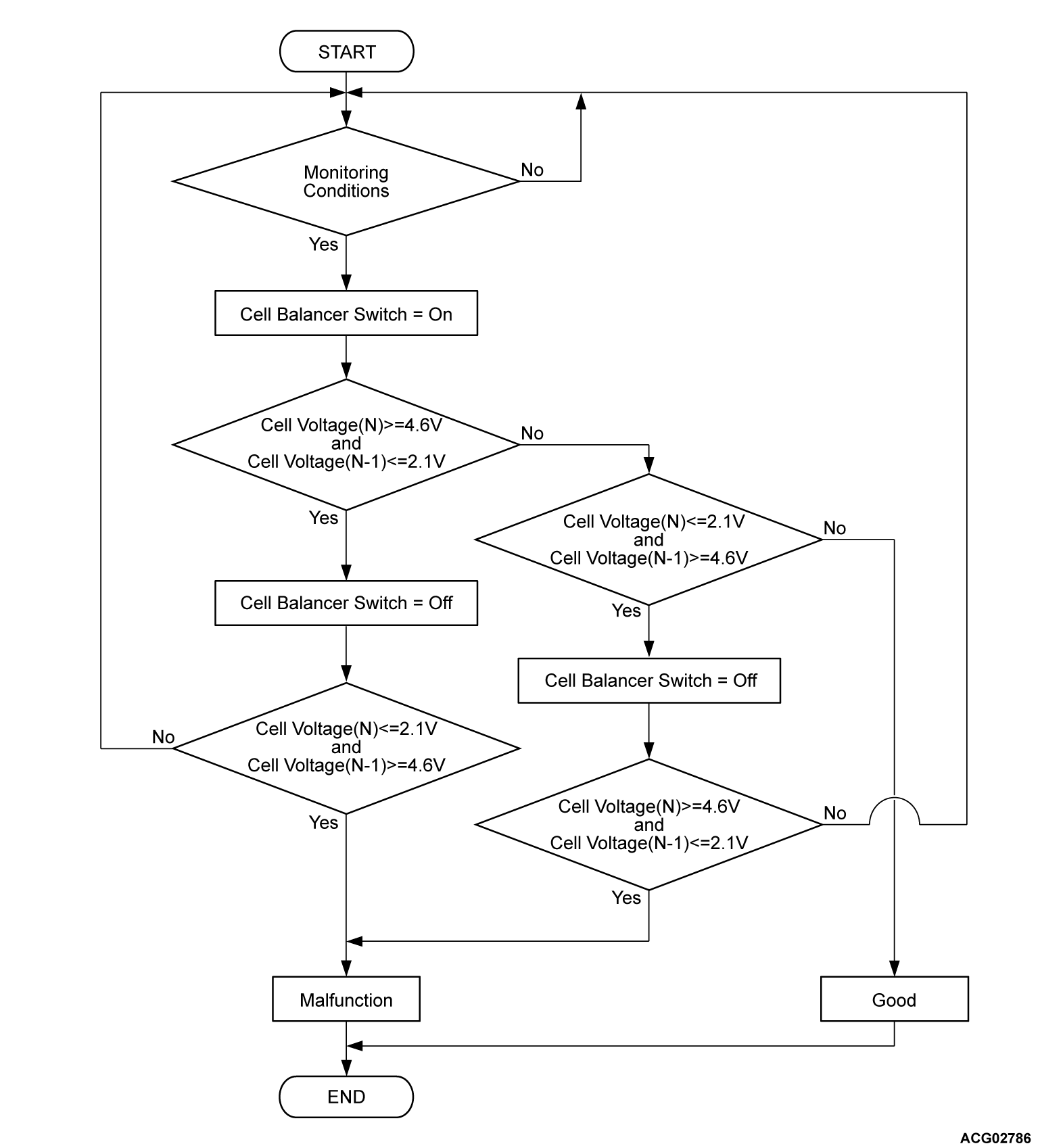DTC P0B3B, P0B40, P0B45, P0B4A, P0B4F, P0B54, P0B59, P0B72, P0B77, P0B7C, P0B81, P0B86, P0B8B, P0B90, P0BA9, P0BAE, P0BB3, P0BB8: Cell Voltage Sensor Open,
DTC P32EA, P32EB, P32EC, P32F1, P32F2, P32F3, P32F4, P32F5, P32F6, P32F7, P32FC, P32FD, P32FE, P32FF, P3300, P3301, P3302, P3312, P3313, P3314, P3315, P3316, P3317, P3318, P331D, P331E, P331F, P3320, P3321, P3322, P3323, P3328, P3329, P332A, P332B, P332C, P332D, P332E, P3333, P3334, P3335, P3336, P3337, P3338, P3339, P333E, P333F, P3340, P3341, P3342, P3343, P3344: Cell Voltage Sensor Open
DTC P32EA, P32EB, P32EC, P32F1, P32F2, P32F3, P32F4, P32F5, P32F6, P32F7, P32FC, P32FD, P32FE, P32FF, P3300, P3301, P3302, P3312, P3313, P3314, P3315, P3316, P3317, P3318, P331D, P331E, P331F, P3320, P3321, P3322, P3323, P3328, P3329, P332A, P332B, P332C, P332D, P332E, P3333, P3334, P3335, P3336, P3337, P3338, P3339, P333E, P333F, P3340, P3341, P3342, P3343, P3344: Cell Voltage Sensor Open
| caution | Whenever ECU is replaced, ensure that the CAN bus lines are normal. |
DESCRIPTIONS OF MONITOR METHODS
- The battery management unit (BMU) uses transistors which switch on and off to balance the voltage difference between cells.
- The main drive lithium-ion battery voltage sensor circuit failure is detected using the cell balancing operation.
MONITOR EXECUTION
- Continuous
MONITOR EXECUTION CONDITIONS (Other monitor and Sensor)
Other Monitor (There is no temporary DTC set in memory for the item monitored below)
- Main drive lithium-ion battery cell voltage monitor
- Battery CAN monitor
Sensor (The sensor below is determined to be normal)
- Not applicable
DTC SET CONDITIONS
Check Conditions
- battery management unit (BMU) power supply voltage is 8 volts to 16 volts.
- Time after above conditions satisfy is more than 2 seconds.
Judgment Criterion
- When the transistor switch of the failed battery cell number is on, the voltage of the failed battery cell number changes to 2.1 volts or less.
- When the transistor switch of the failed battery cell number is off, the voltage of the failed battery cell number changes to 4.6 volts or more.
- When the transistor switch before the failed battery cell number is on, the voltage before the failed battery cell number changes to 4.6 volts or more.
- When the transistor switch before the failed battery cell number is off, the voltage before the failed battery cell number changes to 2.1 volts or less.
Judgment Criterion
- When the transistor switch of the failed battery cell number is on, the voltage of the failed battery cell number changes to 4.6 volts or more.
- When the transistor switch of the failed battery cell number is off, the voltage of the failed battery cell number changes to 2.1 volts or less.
- When the transistor switch before the failed battery cell number is on, the voltage before the failed battery cell number changes to 2.1 volts or less.
- When the transistor switch before the failed battery cell number is off, the voltage before the failed battery cell number changes to 4.6 volts or more.
FAIL-SAFE AND BACKUP FUNCTION
- Not available
PROBABLE CAUSE
- The module (battery cell and CMU) in the main drive lithium-ion battery is failed.
DIAGNOSIS
STEP 1. Test the OBD-II drive cycle.
(2) Check if the DTC is set.
Is the DTC set?
![[Previous]](../../../buttons/fprev.png)
![[Next]](../../../buttons/fnext.png)



